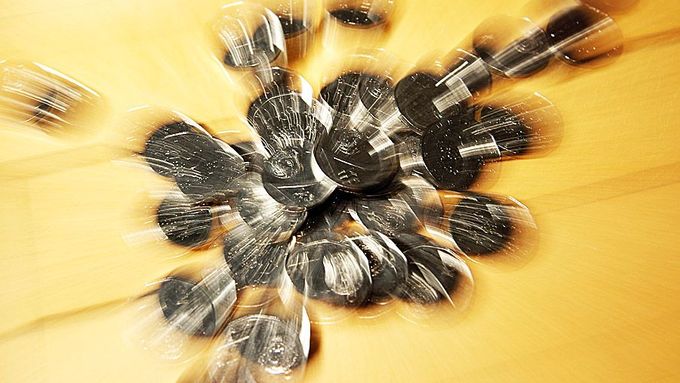Analysis - Czech Crown is unstoppable. Over the past year it has been the world's best performing currency against euro.
The last weekend jumped to 23,00 crowns for one euro was only a mere anomaly on the illiquid Asian market, although the levels around 25 crowns for one euro does not seem to fit the Czech currency very much.
Why? A year ago, we were buying one euro for 28 crowns, so compared to today´s levels, the Czech currency is now 12 percent stronger nominally and unbelievable 15 percent stronger. Such improvement can be hardly explained by domestic fundaments.
Even though the crown strenghtening is a natural process, there are some limits. Let´s unravel the reasons why this is happening and let´s start with the factors that have been in favour of the Crown on a long-term basis.
Behind the long-term strenghtening of the Czech currency, there is domestic productivity growth, in which we lag behind our more developed West European neighbours (roughly 70 percent of the European Currency Union).
Crown is catching up with salaries
More rapid productivity growth should also be accompanied by catching up with prices and salaries, which are lower in te Czech Republic than in West European countries too. After all, a Czech worker earns on average for one hour in euros only one third of what he would earn in Germany.
Considering the fact that the real salaries have been rather lagging behind, rising labour productivity here in the last years, then making the price and salary levels even has remained a burden of strenghtening Czech currency.
The rising labour productivity is reflected in growth of real exports and in overall improvement of the outward balance of the Czech economics, which keeps the Crown strengthening.
However, the Czech currency should more or less copy improving labour productivity. If it is strenghtening too fast, it can damage price competitiveness of our export.
Small island of economic growth
Nonetheless, you can hardly weaken the Crown by these theoretical analyses. On a short-term basis, all the balance models of exchange rates, be them more or less sophisticated, are a bad indicator of the future progress.
That is to say, the steep rise in the Crown at the beginning of 2008 was caused to a big extent by factors separated from real development of the domestic economics.
The steep fall in the dollar on global markets, that had been caused by American mortgage crisis and decrease in American interest resulted in global investors´ massive turning away from the dollar.
Czech economics together with the Polish one have remained one of the few islands in the world, where the economics still works pretty well and the interest at the beginning of this year was growing. So the Central European region has become an ideal space to place the excess dollar liquidity.
Mainly, the big investments made by foreign investors during the period of the weak dollar have pushed the Czech currency down to current levels.
Big fall not expected
The key question arises - can we expect some negative correction, or will the Czech crown only be strenghtening with some smaller breaks?
I am one of those, who argue in favour of a temporary correction. If we accept the theory that the steeper improvement of the Czech currency in the first quarter was caused by the inflow of short-term foreign liquidity from dollars, we can also count with its outflow in the future.
That could happen in the moment when the global dollar loss is stopped and the American currency will win back part of the lost trust of investors.
To achieve this, the American Fed needs to stop further releasing the currency brakes and at least slow down the agressive pace of decreasing the interest rates.
But even then, we cannot expect any dramatic worsening of mood on the foreign exchange market in the Czech Republic. Because we await a take-off of some new pro-export manufacturing facilities (e.g. Škoda and Hyundai) and also, levels around 26 crowns for one euro will be luring a major part of domestic producers to invest.










